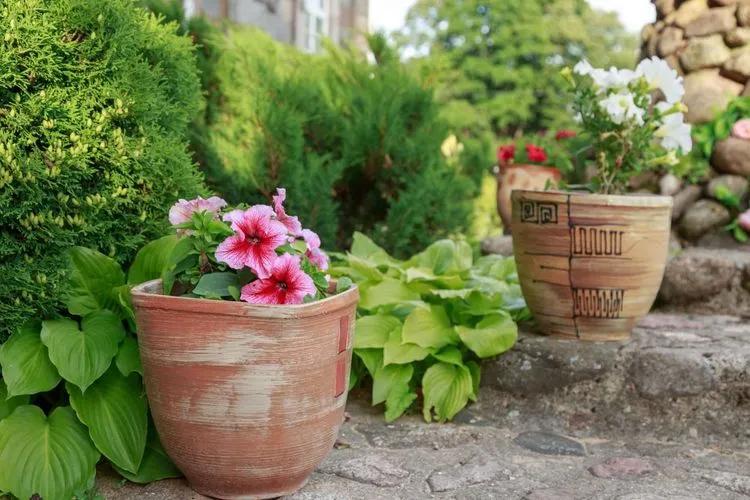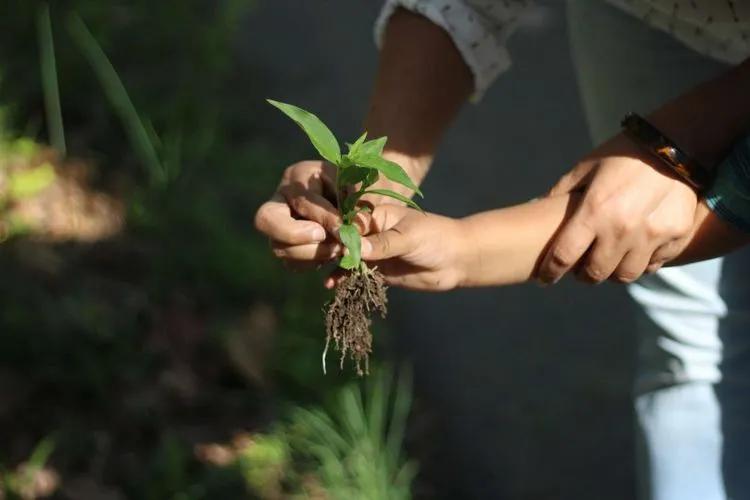The winter garden is different from the spring-summer garden in many ways. Not only there is an obvious difference in the temperature. Also, plants grow differently in the winter - the colder the climate, the slower the growth rate. Some plants won't start growing until the days lengthen a bit and the temperature gets warmer.
Growth rate
 Plants don’t grow at the same speed rate during the cold months. Lower temperatures slow growth, so it is advisable to think of your winter garden as outdoor cold storage.
Plants don’t grow at the same speed rate during the cold months. Lower temperatures slow growth, so it is advisable to think of your winter garden as outdoor cold storage.
Maintenance
Instead of dealing with drought and aphids, basic winter garden care involves protecting the plants from deep freezing (freezing temperatures that persist for more than a few days). So, you need to keep an eye on the temperature. If the forecast predicts freezing, be prepared to cover the plants with floating shelter or a piece of plastic for temporary protection.
It can be quite difficult to understand how to plant a winter garden when the summer garden is full of crops. A good tip is to put your winter varieties among summer plants. When your summer plants are ready, cut them at soil level and leave the roots to rot in the ground, where they return nutrients to the soil and create air spaces for other plants to use.
How often to water?
It is better to soak annual and perennial flowers planted in summer every two or three days, since their roots are small and located close to the soil surface. Freshly planted flowers should also be watered once or twice a day.
The hotter and drier it gets, the more moisture the plants lose, and the more important is to keep an eye on the watering hose. Plants also lose more moisture during the windy and sunny days than during calm, cloudy and humid periods.
Planting time makes a difference
A good idea to increase the likelihood of spring crops is planting them in the evening. This gives the plants half a day to acclimate before they encounter more serious problems - from late morning to late evening. Planting on a cloudy day is also less stressful than planting on a sunny day. If this cloudy period is followed by a day or two of rain, it would be perfect.
Prepare for winter

- Clear up and shore up plants. Before the first frosts, prune summer-flowering shrubs and dead-head autumn plants. Check if all the structures are stable for snow not to damage it.
- Keep off the grass and avoid walking on it.
- Protect plants from cold. Wrap pots of half-hardy plants in fleece or bubble wrap, bring tender plants indoors (or put them in a greenhouse).
- Dig garden beds. If you have clay soil, dig the beds for the frost to break up the soil over the winter, improving the structure. Tip: if you have sandy soil, wait until spring to dig.
- Get bulbs in the ground. You can choose a mixture of varieties and plant them in clumps.
Not sure what to plant in winter? Read below on the ideal herbs and flower species to grow in winter and summer months.
What to plant in December
- Large Leaf Basil
- Mammoth Long Island Dill
- Mint
- Chives
- Creeping Thyme
- Hyacinth
- Geranium
- Begonia
What to plant in January
- Zinnias
- Marigolds
- Geraniums
- Rudbeckia
- Chamomile
- Poppies
- Cones
What to plant in February

- Tomatoes
- Peppers
- Daisies
- Garlic
- Parsnips
- Carrots (under cover)
- Lettuce (under cover)
- Radish (under cover)
- Peace (under cover)
What to plant in June
- Beans
- Beets
- Cabbage
- Carrots
- Corn
- Cucumbers
- Melons
What to plant in July
- Arugula,
- Beans,
- Brussels sprouts,
- Broccoli,
- Carrots,
- Corn,
- Cucumbers,
- Kale,
- Parsley,
- Spinach.
What to plant in August
- Marigolds
- Alyssum
- Snapdragons
- Spinach
- Radishes
- Peas
- Lettuce
- Kale
- Turnips
- Cucumbers
- Chrysanthemums
